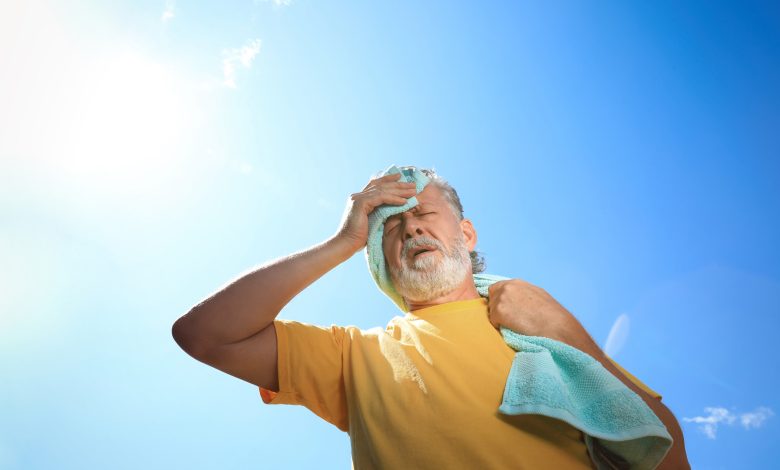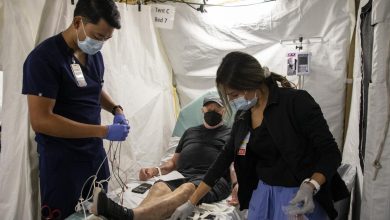Extreme Heat Safety Tips as Dangerous Temperatures Hit the U.S.

As climate change continues to impact global weather patterns, extreme heat events are becoming increasingly common across the United States. During the summer months, millions of Americans face dangerous temperatures that pose serious health risks, strain power grids, and threaten vulnerable populations. In recent years, record-breaking heatwaves have swept across the country, from California’s deserts to the urban heat islands of New York City.
The U.S. National Weather Service and public health authorities have repeatedly issued heat advisories and warnings, urging citizens to take precautions. But despite these alerts, heat remains the deadliest weather-related hazard in the country, surpassing floods, hurricanes, and tornadoes in annual fatalities.
This article offers a comprehensive guide on extreme heat safety tips to help individuals, families, and communities stay safe during periods of dangerously high temperatures. Whether you’re working outside, caring for a vulnerable loved one, or just trying to keep cool at home, these strategies can make a critical difference.
Understanding Extreme Heat and Its Dangers
Extreme heat refers to prolonged periods of high temperatures, often accompanied by high humidity. When the body cannot cool itself efficiently—typically through sweating—it can overheat, leading to serious medical conditions such as:
- Heat Exhaustion
- Heat Cramps
- Heat Stroke (Sunstroke)
- Dehydration
- Hyperthermia
High-risk groups include:
- Older adults (especially 65+)
- Infants and young children
- People with chronic illnesses
- Outdoor workers
- Individuals without access to air conditioning
- Pets and animals
The Urban Heat Island Effect
Cities can be significantly hotter than surrounding rural areas due to the “urban heat island” effect. Concrete, asphalt, and buildings absorb and retain heat, leading to higher nighttime temperatures. This makes it especially difficult for city dwellers to cool down after sunset, increasing the risk of heat-related illnesses.
General Safety Tips During Extreme Heat
Whether you’re indoors or outside, there are several precautions you should take when temperatures soar:
1. Stay Hydrated
- Drink plenty of water, even if you don’t feel thirsty.
- Avoid alcohol, caffeine, and sugary drinks as they can dehydrate you.
- Eat fruits with high water content like watermelon, oranges, and cucumbers.
2. Wear Appropriate Clothing
- Opt for lightweight, loose-fitting, and light-colored clothes.
- Wear a wide-brimmed hat and UV-blocking sunglasses when outside.
- Use sunscreen (SPF 30 or higher) to protect your skin from sunburn, which impairs the body’s ability to cool itself.
3. Limit Outdoor Activities
- Schedule strenuous activities for early morning or late evening.
- Take frequent breaks in the shade or a cool area if you must be outside.
- Avoid outdoor exercise during the peak heat hours of 10 a.m. to 4 p.m.
4. Stay Indoors in Air Conditioning
- Spend time in air-conditioned buildings—malls, libraries, community centers.
- If you don’t have AC, use fans and take cool showers or baths.
- Use window coverings to block direct sunlight and reduce indoor temperatures.
5. Never Leave People or Pets in a Car
- Temperatures inside a parked car can rise by 20°F in just 10 minutes.
- Even with windows cracked open, vehicles become deadly hot rapidly.
- Always check the back seat before leaving your car.
Recognizing and Responding to Heat-Related Illnesses
It’s crucial to understand the warning signs of heat-related medical conditions:
1. Heat Exhaustion
Symptoms:
- Heavy sweating
- Weakness or fatigue
- Dizziness or fainting
- Muscle cramps
- Nausea or vomiting
- Cool, clammy skin
Action:
- Move to a cooler place.
- Loosen clothing and apply cool, wet cloths to the body.
- Sip water.
- Seek medical help if symptoms worsen or last longer than an hour.
2. Heat Stroke
Symptoms:
- Body temperature over 103°F (39.4°C)
- Red, hot, dry or damp skin
- Rapid pulse
- Confusion, slurred speech
- Seizures or unconsciousness
Action:
- Call 911 immediately.
- Move the person to a cool area.
- Use cool cloths or a cold bath to lower body temperature.
- Do NOT give fluids if the person is unconscious.
Home Preparation and Cooling Strategies
As temperatures continue to rise, many households experience challenges keeping cool, particularly in areas with limited access to air conditioning. Here’s how to prepare your home for extreme heat:
1. Improve Indoor Ventilation
- Use fans strategically to circulate air, especially at night when it’s cooler.
- Create a cross-breeze by opening windows on opposite sides of the home during cooler hours.
2. Keep Heat Out
- Close curtains and blinds during the day.
- Use reflective window film or thermal drapes.
- Seal gaps around windows and doors to keep hot air out.
3. Optimize Appliance Use
- Avoid using the oven or stove during the day.
- Turn off unnecessary lights and electronics.
- Use energy-efficient cooling devices where possible.
4. Create a Cooling Station
- Set up a room with a fan, plenty of water, and cooling towels.
- Consider a portable or window air conditioning unit if central AC is unavailable.
Caring for Vulnerable Individuals
Extreme heat disproportionately affects certain populations. It’s essential to check on:
1. Older Adults
- Ensure they have access to a cool environment.
- Monitor medications that may affect hydration or temperature regulation.
- Encourage regular hydration and light meals.
2. Infants and Children
- Never leave them in parked cars.
- Dress them in light clothing and keep their rooms cool.
- Limit outdoor play during hot hours.
3. Individuals with Disabilities or Chronic Illness
- Some medical conditions impair heat regulation.
- Those who rely on electronic medical equipment may need backup power in case of outages.
- Coordinate with caregivers and emergency services if needed.
Pet Safety During Heatwaves
Animals are also vulnerable to extreme heat. Protect your furry friends with these tips:
- Keep pets indoors during the heat of the day.
- Provide plenty of fresh water and a shady area if they must be outside.
- Avoid walking dogs on hot pavement; it can burn their paws.
- Never leave pets unattended in a car.
Community Resources and Cooling Centers
When homes lack adequate cooling, local governments and non-profits often open cooling centers in public buildings. These are air-conditioned spaces available to residents during heat emergencies.
How to Find Cooling Centers:
- Visit your city or county’s emergency management website.
- Call 2-1-1, a free service that connects people to community resources.
- Check with local libraries, senior centers, and schools.
Power Outages and Extreme Heat
Heatwaves can put intense pressure on power grids, increasing the risk of blackouts. Prepare for potential outages with these steps:
1. Have Emergency Supplies Ready
- Flashlights, batteries, battery-operated fans.
- A cooler with ice packs to preserve medications or perishables.
- Backup charging devices for phones.
2. Keep the Home Cool Without Power
- Close all windows and doors to keep cool air inside.
- Hang damp towels in front of fans for evaporative cooling.
- Sleep downstairs or in basements where temperatures are lower.
Workplace and Outdoor Job Safety
Outdoor workers—construction crews, landscapers, delivery drivers—face significant risks during extreme heat events. Employers and employees should:
Follow OSHA Guidelines:
- Allow frequent rest breaks in shaded or air-conditioned areas.
- Provide cool drinking water every 15–20 minutes.
- Acclimate new workers to heat gradually over 1–2 weeks.
- Train staff to recognize heat illness symptoms.
Heat Safety and Climate Change
As climate change accelerates, extreme heat events are expected to become more frequent, intense, and prolonged. According to the Centers for Disease Control and Prevention (CDC) and NOAA, the average number of annual heatwaves in U.S. cities has tripled since the 1960s.
Long-Term Strategies for Heat Resilience:
- Expand access to affordable air conditioning.
- Retrofit public housing and older buildings with heat-resistant infrastructure.
- Increase green spaces and tree canopies to reduce urban heat.
- Improve emergency response systems for heat-related events.
Conclusion: Staying Safe in a Warming World
Extreme heat is a growing threat that demands both individual action and systemic change. While government agencies play a vital role in disseminating alerts and opening cooling centers, personal preparedness is key.
By recognizing the dangers of heat, staying informed, and using the tips outlined in this article, Americans can better protect themselves and their communities during the hottest days of the year. Whether you’re helping a neighbor, conserving energy, or simply finding ways to stay cool, every effort counts.




